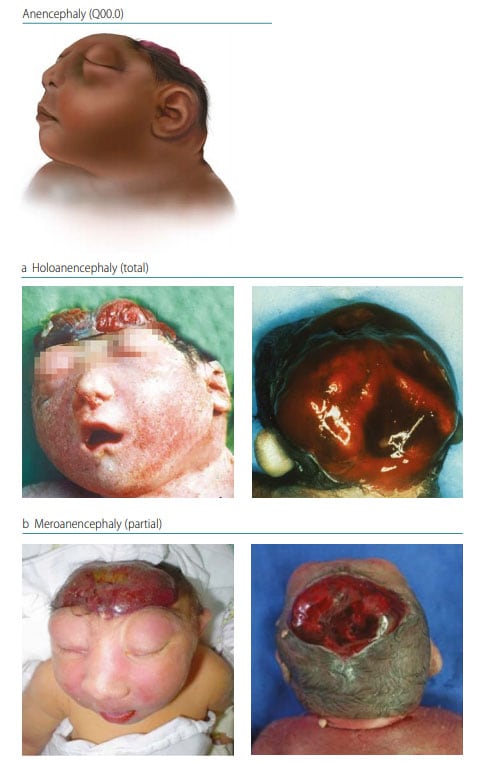Anencephaly
Anencephaly is characterized by a total (holo) or partial (mero) absence of the brain with absence of the cranial vault (calvaria) and covering skin.
Fig. 2. Anencephaly

Photograph sources: Latin American Collaborative Study of Congenital Malformations (ECLAMC); CDC–Beijing Medical University collaborative project.
- Type – holoanencephaly (panel a: total absence) is the most common type of anencephaly; meroanencephaly (panel b: partial absence).
- Covering – no skin covering residual brain tissue or cranial vault (calvarium).
Diagnosis
Prenatal. Anencephaly is diagnosed prenatally but should always be confirmed postnatally. Use programme rules (standard operating procedures [SOPs]) to decide whether to accept or not accept prenatal diagnoses without postnatal confirmation (e.g. in cases of termination of pregnancy or unexamined fetal death).
Postnatal. The newborn examination confirms the diagnosis and will distinguish anencephaly from the other anomalies of the brain and cranium.
Clinical and epidemiologic notes
- Eyes are normally formed; bulging is a result of absence of the frontal portion of the cranial vault.
- Cerebellum, brain stem and spinal cord are intact.
- Anencephaly can be confused with:
- Craniorachischisis characterized by anencephaly plus rachischisis, a contiguous upper spine defect without meninges covering the neural tissue.
- Amniotic band or limb-body wall spectrum, which have other findings (facial schisis, limb and ventral wall anomalies, bands) and allow the differentiation from typical anencephaly
Checklist for high-quality reporting
| Anencephaly – Documentation Checklist |
Describe defect in detail:
|